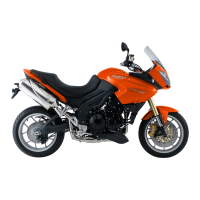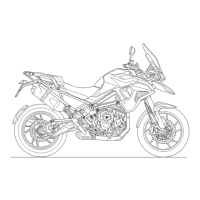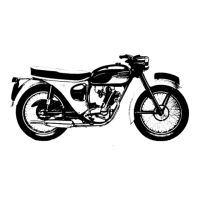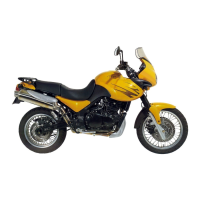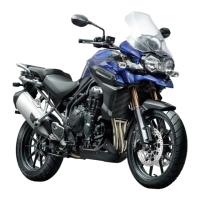Clean the valves and remove any burnt oil from the stems;
if
the valve faces are
pitted they can be re-ground, but excessive grinding by machine is not advisable as
the heat transference of the valve will be adversely affected. The stem of the valve
should be inspected for wear and scuffing and if either is pronounced,
it
should be
replaced.
Removing Carbon from Cylinder Head. Remove the carbon with a
flat
round
headed scraper from the head spheres and ports. Take particular care when cleaning
i
1
around the valve seatings to,avoid damage to the faces.
Inspect the valve seats for
pitting or pocket~ng and the valve guidesfor ovality. Remember, if thevalve guides are
changed, the valve seatings must be re-cut. The same applies to a valve replacement
l
or a valve wliich has had the
seating
face re-ground.
I
I
I
I
Grinding-in the Valves. This should be done with a fine carborundum grinding-in
paste. First smear a little grease around the valve face and insert the stem into the
new valve guide. Attach the valve grinding tool to the stem tip and commence to
grind the valve face to the valve seating, using
a
semi-rotary movement, occasionally
lifting the valve and turning through 180'. Continue this process until a uniform seat
results. Remove the valve and wash thoroughly in petrol or parafin and examine
the seating. A surer method
is
to apply a thin even smear of "Engineers' marking
blue" to the face of the valve. Rotate the valve one complete revolution and then
remove
it
for inspection.
.
.
Replacing the Valve Guides.
To remove the old guide place a shoulder drift
into the guide from the inside of the combustion chamber and drive out.
When
fitting the new guide, grease the outer diameter and drive into the cylinder head
from the top. 'Always use a shoulder drift when doing this operation and drive
in the guide carefully to avoid damage.
I
I
A thin uniform line. free from pit marks or other surface blemishes on valve face and
valve seat indicates that the seating is satisfactory. After completion, the part must
be thoroughly washed to remove all traces of the grinding-in compound.
Re-cutting the Valve Seats.
A job such as this can normally be undertaken by
your dealer
at
a moderaie cost.
After the seats have been re-cut, they should be
blended to give an even seatlng of approx~mately (2.38 mm.).
i
Assembling the Cylinder Head. First ensureihat all parts are thoroughly clean,
then oil the valve stems and guides. Place a valve into its respective guide (Note
i
!
i
inlet are marked
"IN"
and exhaust
"EX".)
and holding the valve head against the
seat, turn the head on
its
side and
fit
phe lower spring cup over the guide and then
I
I
i
I
1
the inner and outer spring and finally the top collar. Compress the springs with a
Compressor tool until the split cotters can be fitted into the cpllar and around the
valve stem cut-away. .Release the pressure'on the compressor tool and remove.
Tap the stem head of the valve smartly to ensure correct replacement of the cotters.
Repeat the operation to the other valves. The exhaust pipe stubs on the T100.
are screwed into the exhaust ports and tightness must be ensured before replacing
the cylinder head.
Do not replace the rocker boxes at this stage.
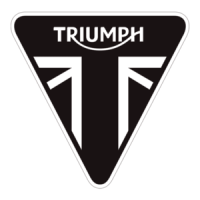
